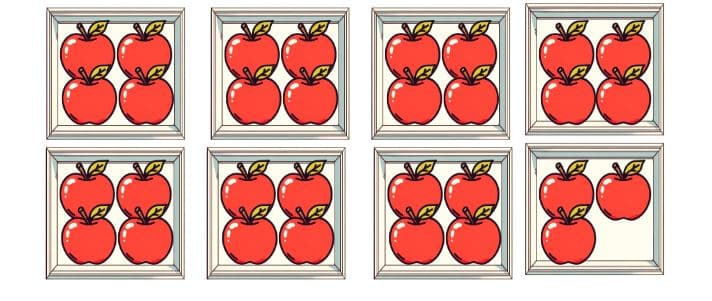Myths about teaching can hold you back
- Year 4
Use knowledge of division to solve problems
I can use knowledge of division to solve problems.
- Year 4
Use knowledge of division to solve problems
I can use knowledge of division to solve problems.
These resources were made for remote use during the pandemic, not classroom teaching.
Switch to our new teaching resources now - designed by teachers and leading subject experts, and tested in classrooms.
Lesson details
Key learning points
- When solving division problems, sometimes a remainder is recorded as the number left over.
- When solving division problems, sometimes a remainder can be ignored.
- When solving division problems, sometimes an extra group is made to include the remainder.
- The question asked in the problem shows whether we should ignore or include the remainder.
Keywords
Remainder - A remainder is the amount left over after division when the dividend does not divide exactly by the divisor.
Common misconception
Children may struggle to visualise how the remainder relates to the question asked in the problem, or may solve the equation without relating back to the question asked.
Encourage them to write the division equation for the problem and say what each part represents, focusing particularly on the role of the remainder and how it relates to the question asked.
To help you plan your year 4 maths lesson on: Use knowledge of division to solve problems, download all teaching resources for free and adapt to suit your pupils' needs...
To help you plan your year 4 maths lesson on: Use knowledge of division to solve problems, download all teaching resources for free and adapt to suit your pupils' needs.
The starter quiz will activate and check your pupils' prior knowledge, with versions available both with and without answers in PDF format.
We use learning cycles to break down learning into key concepts or ideas linked to the learning outcome. Each learning cycle features explanations with checks for understanding and practice tasks with feedback. All of this is found in our slide decks, ready for you to download and edit. The practice tasks are also available as printable worksheets and some lessons have additional materials with extra material you might need for teaching the lesson.
The assessment exit quiz will test your pupils' understanding of the key learning points.
Our video is a tool for planning, showing how other teachers might teach the lesson, offering helpful tips, modelled explanations and inspiration for your own delivery in the classroom. Plus, you can set it as homework or revision for pupils and keep their learning on track by sharing an online pupil version of this lesson.
Explore more key stage 2 maths lessons from the Division with remainders unit, dive into the full primary maths curriculum, or learn more about lesson planning.

Licence
Prior knowledge starter quiz
6 Questions
Q1.Sofia has 31 apples and is putting them into boxes of 4 apples. How many full boxes of apples will there be?



